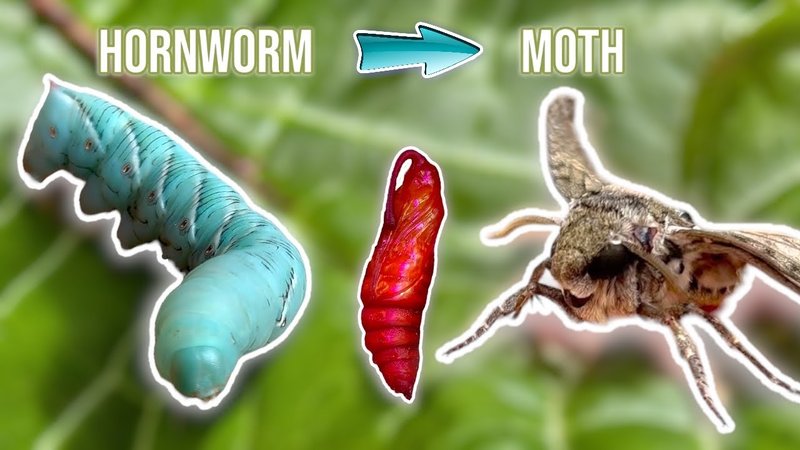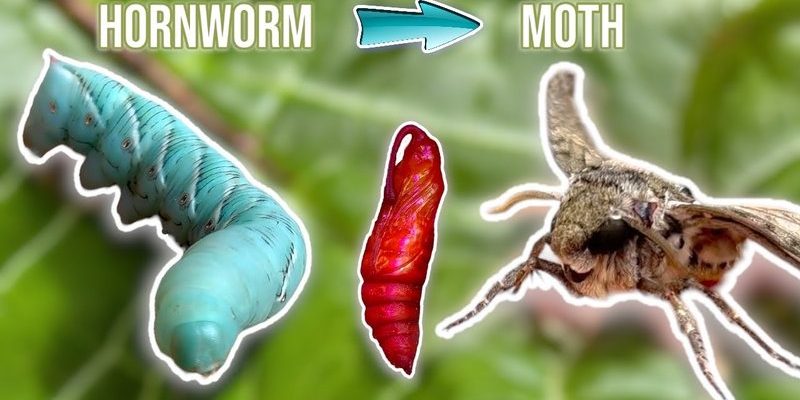
The Life Cycle of Hornworms
Hornworms go through several stages in their life cycle, which can all happen pretty quickly. This cycle consists of four main stages: egg, larva (hornworm), pupa, and adult moth.
1. Egg Stage: This initial stage is fairly quick. Female moths lay their eggs on the underside of tomato or tobacco leaves. The eggs are tiny, often less than a millimeter in size, and can hatch within about 3 to 10 days, depending on the temperature and humidity.
2. Larval Stage: Once hatched, the baby hornworms start feeding immediately. This is the stage where they grow the most. In just about three to four weeks, these little caterpillars can reach up to 4 inches long! During this time, they can consume a lot of plant material, which is why they can be problematic for gardeners.
Factors Influencing Growth Rate
The growth rate of hornworms can vary due to several factors. Understanding these can help you figure out why some hornworms seem to grow faster than others.
1. Temperature: Warmer temperatures can speed up the growth of hornworms. Generally, they thrive best between 70°F and 85°F. It’s like how we feel more energetic on a sunny day compared to a chilly one.
2. Food Availability: Hornworms are voracious eaters. If they have access to plenty of nutritious leaves, they grow faster. If there’s little food, it can slow their growth. So, providing a steady supply of food can help keep them growing at a healthy pace.
The Stages of Hornworm Growth
As hornworms grow, they go through various stages known as instars. Each instar represents a specific growth phase before they molt and move on to the next.
- First Instar: This happens right after they hatch. They’re tiny and usually stay in one spot to avoid predators.
- Second Instar: After their first molt, they start to grow more quickly and become more mobile, eating more leaves.
- Third and Fourth Instars: In these stages, they reach their maximum size and can be quite striking with their green bodies and horn-like protrusions.
Each stage can last a few days, and the entire larval phase lasts around two to three weeks.
Once they reach their full size, hornworms don’t just stop. They’re destined for transformation!
Pupa Stage: After feeding and growing, the hornworm will find a safe place to pupate. Here, it will shed its skin one last time and encase itself in a protective chrysalis. This can take another 1 to 2 weeks.
During this time, the magic happens! Inside the chrysalis, the hornworm is transforming into a moth. It’s like how a caterpillar turns into a beautiful butterfly, but with a slightly different twist.
The Adult Moth
After the pupal stage, the adult moth emerges—typically at night. This section of the life cycle is shorter compared to the larval period.
Life Expectancy: The adult moth lives about a week or two, just long enough to mate and lay eggs to start the cycle over again. They can often be found flying around gardens at night, providing a crucial role in pollination.
Why Understanding Hornworm Growth is Important
Knowing how fast hornworms grow can help you manage them more effectively if they invade your garden.
1. Pest Control: If you’re a gardener, understanding their life cycle means you can take action before they cause too much damage. Early detection and intervention can save your plants!
2. Ecosystem Role: Hornworms feed birds, insects, and other wildlife, playing a role in biodiversity. They’re essentially a buffet for various creatures.
Hornworms are fast-growing little critters that can be both fascinating and frustrating, depending on your perspective. They grow from tiny eggs to sizable, munching machines in just weeks, with each life stage packed with its own wonders. If you’re gardening, keeping an eye out for these pests can save your plants, but remember, they also contribute to the ecosystem.
Ultimately, the next time you spot a hornworm, you might just appreciate its quick journey through life a little more. After all, life moves fast in the garden!

